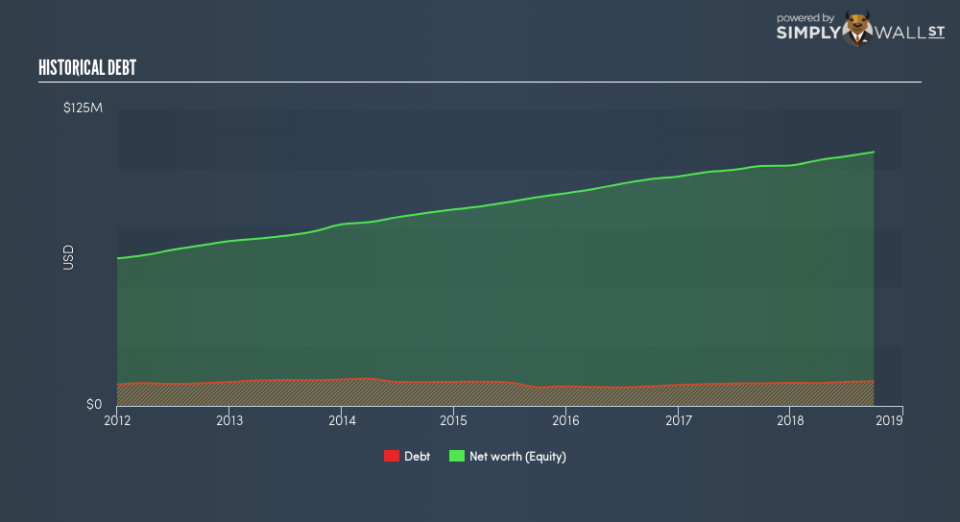Can United Security Bancshares (NASDAQ:UBFO) Survive The Next Financial Crisis?

As a small-cap finance stock with a market capitalisation of US$183m, the risk and profitability of United Security Bancshares (NASDAQ:UBFO) are largely tied to the underlying economic growth of the region it operates in US. Given that banks operate by reinvesting deposits in the form of loans, negative economic growth may lower the level of saving deposits and demand for loans, directly affecting those banks’ levels of cash flows. After the Financial Crisis in 2008, a set of reforms called Basel III was created with the purpose of strengthening regulation, risk management and supervision in the banking sector. These reforms target banking regulations and intends to enhance financial institutions’ ability to absorb shocks resulting from economic stress which could expose banks like United Security Bancshares to vulnerabilities. Unpredictable macro events such as political instability could weaken its financial position which is why it is important to understand how well the bank manages its risk levels. Sufficient liquidity and low levels of leverage could place the bank in a safe place in case of unexpected macro headwinds. Today we will be measuring United Security Bancshares’s financial risk position by looking at three leverage and liquidity metrics.
Check out our latest analysis for United Security Bancshares
Why Does UBFO’s Leverage Matter?
Banks with low leverage are exposed to lower risks around their ability to repay debt. A bank’s leverage can be thought of as the amount of assets it holds compared to its own shareholders’ funds. While financial companies will always have some leverage for a sufficient capital buffer, United Security Bancshares’s leverage ratio of less than the suitable maximum level of 20x, at 8.45x, is considered to be very cautious and prudent. With assets 8.45 times equity, the banks has maintained a prudent level of its own fund relative to borrowed fund which places it in a strong position to pay back its debt in times of adverse events. Should the bank need to increase its debt levels to meet capital requirements, it will have abundant headroom to do so.
How Should We Measure UBFO’s Liquidity?


Due to its illiquid nature, loans are an important asset class we should learn more about. Normally, they should not exceed 70% of total assets, which is consistent with United Security Bancshares’s state given its ratio of 63%. At this level of loan, the bank has preserved a sensible level between maintaining liquidity and generating interest income from the loan.
What is UBFO’s Liquidity Discrepancy?
UBFO profits by lending out its customers’ deposits as loans and charge an interest on the principle. These loans may be fixed term and often cannot be readily realized, yet customer deposits on the liability side must be paid on-demand and in short notice. This mismatch between illiquid loans and liquid deposits poses a risk for the bank if unusual events occur and requires it to immediately repay its depositors. Since United Security Bancshares’s loan to deposit ratio of 73% is within the sensible margin, below than the appropriate maximum of 90%, this level positions the bank cautiously in terms of liquidity as it has not disproportionately lent out its deposits and has retained an apt level of deposits.
Next Steps:
United Security Bancshares meets all of our liquidity and leverage criteria, exhibiting operational prudency. The operational risk side of a bank is an important fundamental often overlooked by investors. The bank’s favourable liquidity and leverage position exposes it to less risk when it comes to repaying financial obligations, in particular, in the case of an adverse macro event. Today, we’ve only explored one aspect of United Security Bancshares. However, as a potential stock investment, there are many more fundamentals you need to consider. I’ve put together three essential factors you should further examine:
Future Outlook: What are well-informed industry analysts predicting for UBFO’s future growth? Take a look at our free research report of analyst consensus for UBFO’s outlook.
Valuation: What is UBFO worth today? Has the future growth potential already been factored into the price? The intrinsic value infographic in our free research report helps visualize whether UBFO is currently mispriced by the market.
Other High-Performing Stocks: Are there other stocks that provide better prospects with proven track records? Explore our free list of these great stocks here.
To help readers see past the short term volatility of the financial market, we aim to bring you a long-term focused research analysis purely driven by fundamental data. Note that our analysis does not factor in the latest price-sensitive company announcements.
The author is an independent contributor and at the time of publication had no position in the stocks mentioned. For errors that warrant correction please contact the editor at editorial-team@simplywallst.com.

